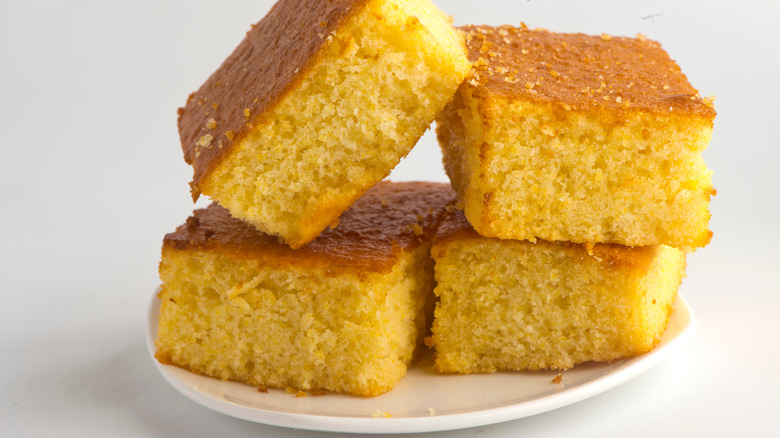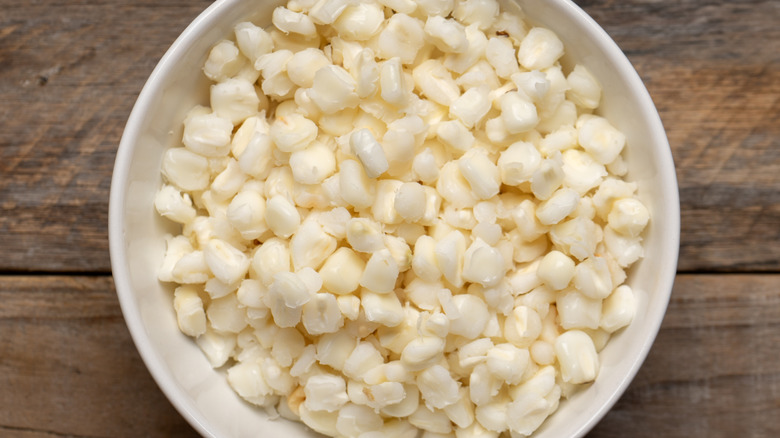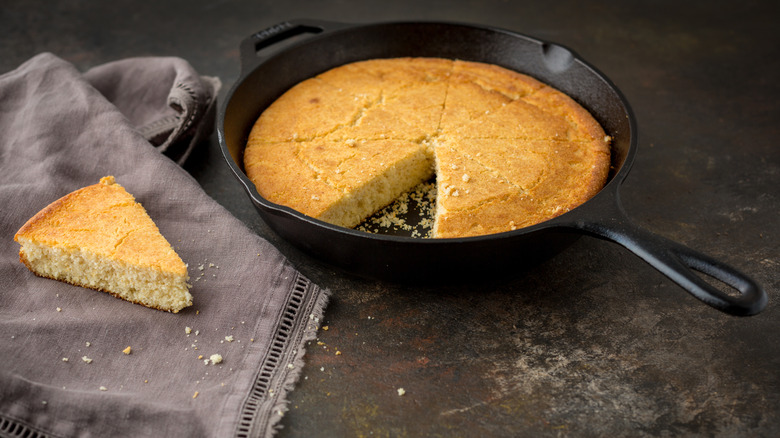Unlock Super Crispy Cornbread Crust With One Ingredient
There's a way to achieve a particular kind of extra-crispy crust to an otherwise soft and tender cornbread, and it's not by using any traditional ingredient: You won't get it through leavening agents, salt, sweeteners, or even medium-ground cornmeal. No, the secret to this special kind of crisp cornbread crust lies in the use of a type of finely ground corn flour called masa harina. Cornbread made with masa is a whole other animal.
Other than using masa, your cornbread recipe won't differ much from those that use leavening agents and sweeteners. Masa is essentially corn flour, not cornmeal, and because of that, it is much more finely ground. But that's not the only thing that distinguishes masa: The way it's processed changes its flavor as well as texture (it's been described as more "corn-forward"). What happens when you combine this soft, bread-flour consistency with ground corn's natural crunch? A crisp cornbread crust, that's what.
Nixtamalization: A way to achieve peace in hominy
Cornmeal is ground field corn, also known as maize. It's only the difference in the grind from coarsest to finest that differentiates grits, delicious polenta, and, of course, cornmeal. If you buy stone-ground cornmeal (and you should), the corn's germ and bran are ground up, as well. Grits are sometimes made with hominy, which is dried maize that is processed with lye and/or lime in order to remove the hulls and tenderize the kernels. This is known as nixtamalization, an ancient Mesoamerican process (traditionally using wood ash) that not only greatly increased the body's ability to absorb the corn's vitamins and nutrients, but also added aromatic nuance and depth of flavor — corn, forward.
Unlike cornmeal, masa is made from nixtamalized corn. So, it isn't just the fineness of its grind that sets it apart. But even so, masa keeps its corn essence very much intact; something that all-purpose flour is never going to achieve either in flavor or texture. We have masa to thank for such delicacies as tamales and tortillas, because — like wheat flour — the only thing you need to add to it in order to make a dough is water.
It's not your traditional Southern cornbread
If you're into the idea of baking a sweet, crisp, and almost cakey cornbread — go for it. But the cornbread-made-with-flour concept is actually a bit of a regional bone of contention, for very interesting reasons that have to do with industry as much as sugar. In a nutshell, the commercialization of agriculture in the early part of the 20th century brought us widely available ground corn flour; much finer than the coarse grind a local farmer's water mill could provide, and an ingredient that could actually be leavened. This steel-milled corn flour was less sweet than the old-school "field ripened" corn meal, and before long, cooks (predominantly in the North), started adding sugar to their cornbread.
While this produces a toothsome bake, it's a far cry from traditional Southern cornbread batter, made with buttermilk and cooked in a smoking-hot cast iron skillet smeared with bacon fat — and that, too, results in its own kind of delectable crispness. It sounds like a compare-and-contrast cornbread cook-off will be a highly rewarding experiment.


